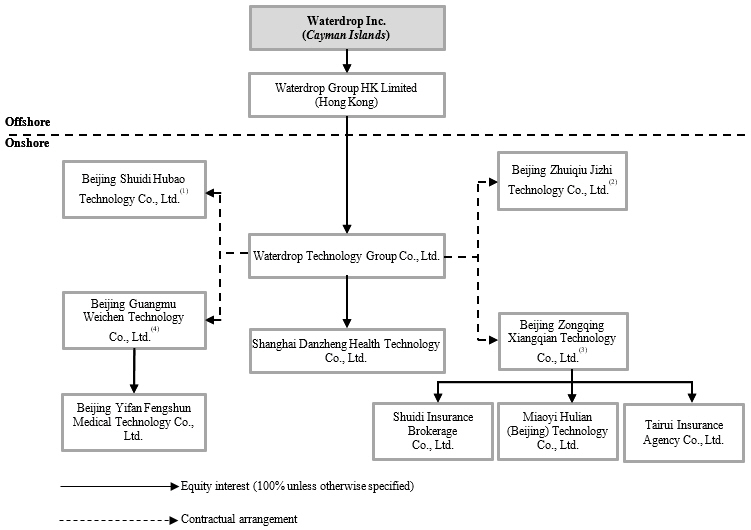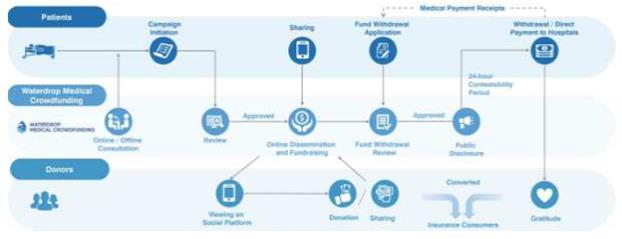In addition, there can be no assurance that the industries we plan to enter into, such as CRO, patient service or CSO industries, will continue to grow at the rates we expect. Any slowdown or reversal of any of these trends could materially and adversely affect demand for our services. Furthermore, government agencies and industry regulatory bodies may impose strict rules, regulations or industry standards on relating to medical consultation and illness management service. The services we provide to our users are subject to and must comply with various applicable legal and regulatory requirements. Any adverse findings by such regulatory authorities or other regulatory or legal noncompliance may result in severe penalties against us. In addition, regulatory authorities may change the laws and regulations from time to time. As a result, our existing compliance procedures may not be adequate for new legal and regulatory requirements, and we may need to incur additional compliance costs and become exposed to negative findings from relevant government authorities.
Regulatory actions, legal proceedings and customer complaints against us could harm our reputation and have a material adverse effect on our business, results of operations, financial condition and prospects.
We were involved in litigations and other disputes in the ordinary course of our business, which include lawsuits, arbitration, regulatory proceedings and other disputes relating to our business. Along with growth and expansion of our business, we may be involved in litigations, regulatory proceedings and other disputes arising outside the ordinary course of our business. Such litigations and disputes may result in claims for actual damages, freezing of our assets, diversion of our management’s attention and reputational damage to us and our management, as well as legal proceedings against our directors, officers or employees, and the probability and amount of liability, if any, may remain unknown for long periods of time. Given the uncertainty, complexity and scope of many of these litigation matters, their outcome generally cannot be predicted with any reasonable degree of certainty. Therefore, our reserves for such matters may be inadequate. Moreover, even if we eventually prevail in these matters, we could incur significant legal fees or suffer significant reputational harm, or we may be unable to enforce the prevailing judgement.
We have been named as a defendant in a putative shareholder class action lawsuit that could have a material adverse impact on our business, financial condition, results of operation, cash flows and reputation.
We are defending against the putative shareholder class action lawsuit described in “Item 8. Financial Information—A. Consolidated Statements and Other Financial Information—Legal Proceedings,” including any appeals of such lawsuit, should our initial defense be successful. We are currently unable to estimate the possible loss or possible range of loss, if any, associated with the resolution of this lawsuit. In the event that our initial defense of this lawsuit is unsuccessful, there can be no assurance that we will prevail in any appeal. Any adverse outcome of this case, including any plaintiff’s appeal, could have a material adverse effect on our business, financial condition, results of operation, cash flows and reputation. In addition, there can be no assurance that our insurance carriers will cover all or part of the defense costs, or any liabilities that may arise from these matters. The litigation process may utilize a significant portion of our cash resources and divert management’s attention from the day-to-day operations of our company, all of which could harm our business. We are also subject to claims for indemnification related to these matters, and we cannot predict the impact that indemnification claims may have on our business or financial results.
Our current risk management system may not be able to exhaustively identify or mitigate all risks to which we are exposed.
We have established risk management, quality control and internal control systems, consisting of policies and procedures that we believe are appropriate for our business. However, the implementation of such policies and procedures may involve human error and mistakes. Moreover, we may be exposed to fraud or other misconduct committed by our employees, crowdfunding consultants, customer service personnel or other third parties, including but not limited to our users and business partners, or other events that are out of our control.
We face reputational, monetary, and legal risks in relation to our discontinuation of the Waterdrop Mutual Aid business.
In March 2021, we ceased the operation of our Waterdrop Mutual Aid platform in order to focus on our core businesses and offer enhanced protection to our users. We have offered to migrate all mutual aid participants as insurance policyholders of our Waterdrop Insurance Marketplace service. In connection with this change, we will voluntarily cover mutual aid participants’ medical expenses arising from medical conditions diagnosed by March 31, 2021 that would have been covered by the ceased mutual aid plan, subject to certain procedural requirements and eligibility criteria, and in addition offered a one-year complementary health insurance policy to each participant with a similar coverage as the participant’s original mutual aid plan. Despite our good intention, participants of mutual aid programs or general public may view our action as adversely affecting their actual or expected interests, which may in turn harm our reputation. In the worst-case scenario, participants may choose to bring complaints and lawsuits against us. Although we were contractually permitted to terminate the mutual aid plans any time in our discretion, lawsuits may nevertheless be time-consuming and costly, and distract our management’s attention.
24

